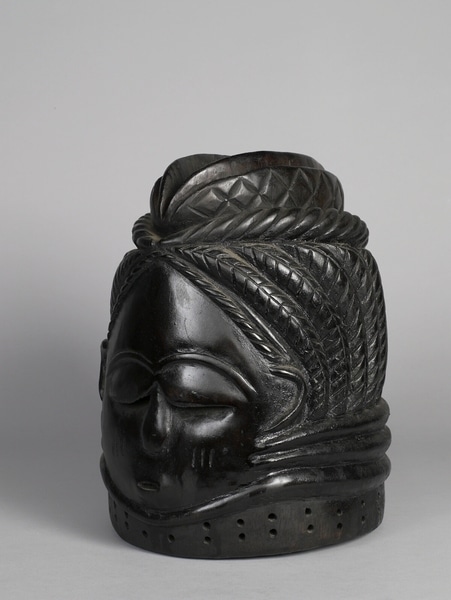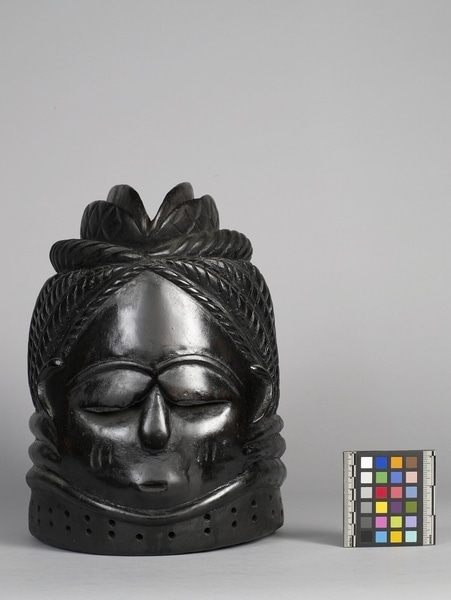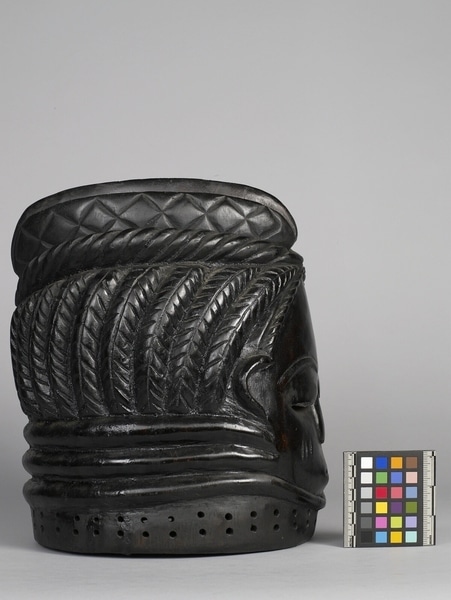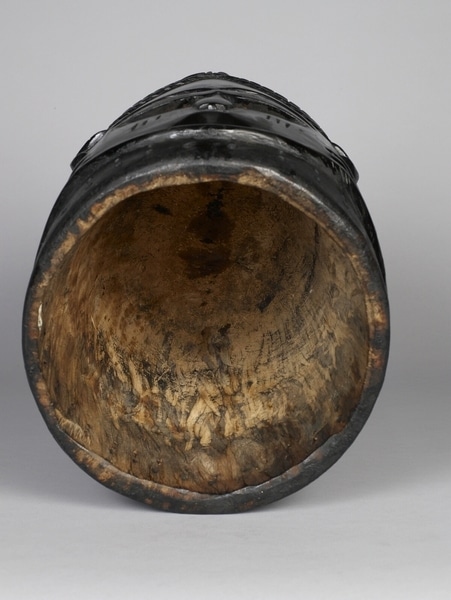Helmet Mask Item Number: K2.204 from the MOA: University of British Columbia




Description
Hollow, dark brown-black wood piece that has a small, flat, frontal face with an elaborate coiffure. The cut out semi-oval eyes are heavily lidded with connecting upraised, arched brows above. Has an oblong nose and a small, horizontal, oval mouth. Three vertical tribal sacrification marks are on each cheek. The ears are crescent-shaped. Around the sides of the head, the coiffure has nineteen vertically curved fern-like features with a thinner one to each front side. Above, six other features radiate from along the top of the head, the bottom one on each side of which has a coil-like feature while the middle one on each side of which is carved with a diamond-shaped pattern, and the top one on each side of which is plain. Around the lower portion of the head, there are three rounded, horizontal bands, the lower one of which goes all the way around while the upper two of which terminate at the sides of the face. Two horizontal series of holes are intended for the fibre fringe.
History Of Use
The sowei, or bundu, mask is made by men but worn as a dance mask by women in the Sande women's society, during girls' initiation camps. There they are prepared for marriage, trained in both domestic and economic pursuits and in singing and dancing. The masked dancers visit the camps to remind the girls of the ideals of female beauty and virtue. When the girls leave, they are considered to be women ready for marriage. During a dance, the mask is worn by a "ndoli jowei" performer, with a full costume concealing the dancer's identity.
Item History
- Made in Sierra Leone
- Owned by Abi Jones
- Received from Abi Jones (Unknown)
What
Where
- Holding Institution
- MOA: University of British Columbia
- Made in
- Sierra Leone
Other
- Condition
- fair